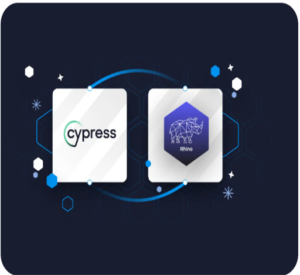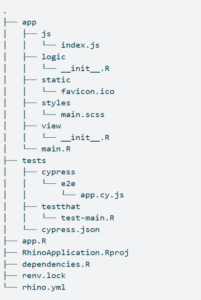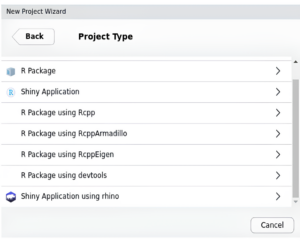Rhino: A Framework for Building Enterprise Shiny Applications
- Data, AI & Analytics
Rhino: A Framework for Building Enterprise Shiny Applications
Introduction:
The landscape of data-driven decision-making in enterprises has evolved, demanding powerful and scalable solutions for data visualization and analysis. Shiny, a web application framework for R, has been instrumental in prototyping and deploying interactive applications. However, as enterprises scale up their operations, traditional Shiny applications face challenges in handling large datasets, complex workflows, and multiple user interactions.
Enter Rhino – a framework meticulously crafted to address the limitations of traditional Shiny applications and elevate Shiny development to the enterprise level. In this blog post, we will delve into what Rhino is, why it is essential, explore its key features, guide you through creating your first Rhino application, and demonstrate how to add your first module.

What is Rhino?
Rhino is a comprehensive framework tailored explicitly for building enterprise-grade Shiny applications. It serves as a bridge between R, Shiny, and enterprise-level requirements, offering a robust solution for organizations aiming to deploy scalable and maintainable Shiny applications.
Why Rhino?
Addressing Limitations
Traditional Shiny applications, while excellent for smaller projects, face hurdles when dealing with large datasets and complex workflows. Rhino steps in to address these limitations by providing tools and structures optimized for enterprise use.
Enhanced Scalability
Rhino introduces features that empower Shiny applications to handle increasing data loads and user interactions. Its architecture is designed to scale with the growing demands of enterprise-level deployment.
Improved Collaboration
By fostering collaboration among data scientists, developers, and business analysts, Rhino streamlines the development process. This ensures a cohesive approach to building Shiny applications that align with business objectives.
Quality
Rhino emphasizes the importance of adhering to best practices throughout the development lifecycle. This includes the implementation of unit testing, end-to-end testing, linting, and code documentation. By embedding these practices into the development process, Rhino ensures the creation of high-quality, error-resistant applications.

Key Features of Rhino
Modular Architecture

Rhino adopts a modular architecture, allowing developers to break down complex applications into manageable and reusable components. This not only enhances code organization but also facilitates easier maintenance and scalability.
Performance Optimization
To meet the demands of enterprise-scale applications, Rhino incorporates performance optimization techniques. This results in faster and more responsive Shiny applications, even when dealing with large datasets.
Advanced Customization
Rhino provides developers with the flexibility to customize and extend functionality according to the specific needs of the enterprise. This ensures a tailored and powerful solution that aligns with business requirements.
Create Your First Rhino Application
Step 1: Setup
To get started with Rhino, you’ll need to install the framework. Use the following commands in your R console:
![]()
Step 2: Project Initialization
Creating a new Rhino application can be done in two ways – by running rhino::init() function or by using the RStudio Create Project functionality.
Create an application using the RStudio wizard

Once Rhino is installed, it will be automatically added as one of the options in RStudio.
This will set up a basic project structure for your Rhino application.
Step 3: Code Organization
Organize your code within the Rhino project by following best practices. Create modular components for different aspects of your application, such as data processing, user interface, and server logic.
Add Your First Module
Now that we have set up our Rhino project and gained an understanding of its architecture, it’s time to enhance our application by adding a module. Modules in Rhino encapsulate specific functionalities, promoting modularity, reusability, and a clean code structure. In this section, we’ll guide you through the process of creating and integrating your first Rhino module.
Understanding Modules
In Rhino, modules are designed to compartmentalize distinct features of your application. Each module can represent a different aspect, such as data processing, user interface components, or server logic. This modular approach simplifies development, making it easier to maintain and extend your Shiny application as it grows in complexity.
Creating First Module
Below is the code snippet attached of a very simple code file.
Dividing the code structure into distinct parts facilitates a clearer understanding.
Firstly, in the box::use() section, you explicitly mention the functions intended for use in the ensuing code, along with their respective packages.
Following that, the ui part is where you articulate the code pertaining to the user interface.
Lastly, within the server section, you find the code associated with the fields and data that are destined to be showcased in the UI. This systematic breakdown of the code enhances readability and comprehension for developers engaging with the script.

Now, we need to import our completed chart.R file into our main script.

Incorporating our chart.R file into the main script involves importing it within the box::use() section. The UI and server functions from the imported file are then utilized in the subsequent code.
Emphasizing the significance of marking every function for export, it is crucial to include '@export' above each function that needs to be made accessible in other files. This practice ensures a seamless transfer of UI and server functionalities from chart.R to the main script, enhancing code modularity and maintainability.
Run The Application
![]()
Conclusion
Rhino emerges as a powerful framework for building enterprise Shiny applications, addressing the limitations of traditional approaches. Its modular architecture, performance optimization, and customization features make it an ideal choice for organizations seeking scalable and maintainable Shiny solutions.
As you embark on your journey with Rhino, explore its documentation and leverage its capabilities to create data-driven applications that align seamlessly with your enterprise needs. Rhino represents a significant stride in the evolution of Shiny development, promising a brighter future for interactive and scalable data applications in enterprise environments.
Related content
Auriga: Leveling Up for Enterprise Growth!
Auriga’s journey began in 2010 crafting products for India’s
